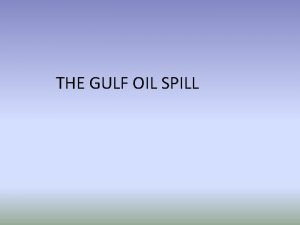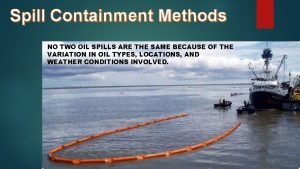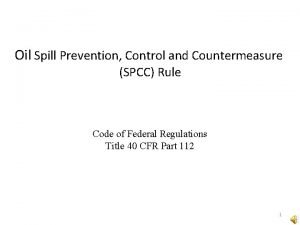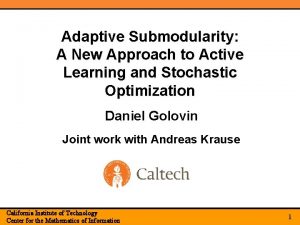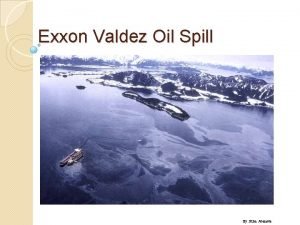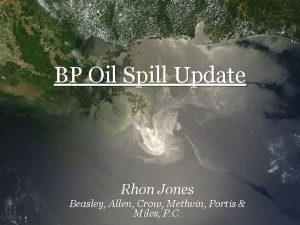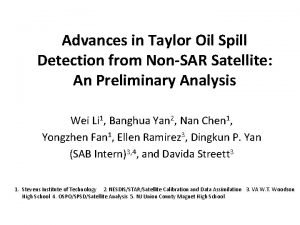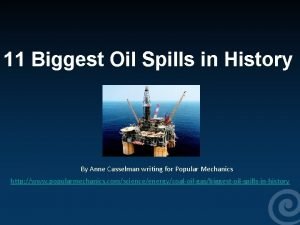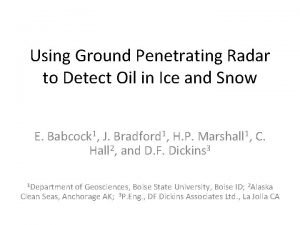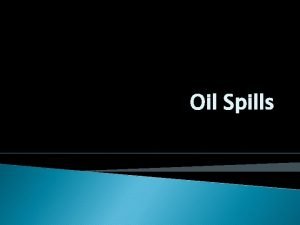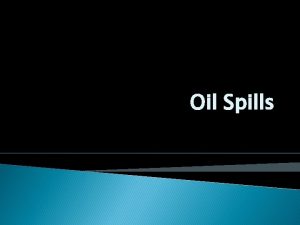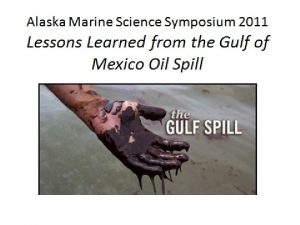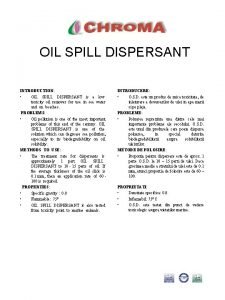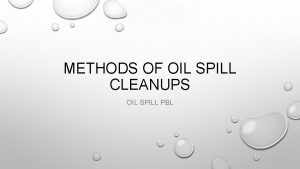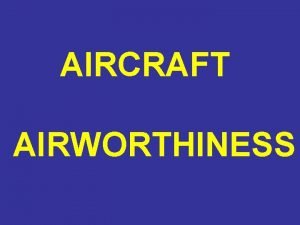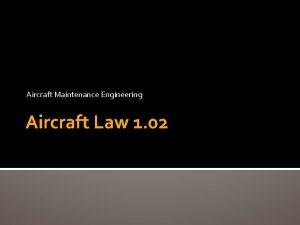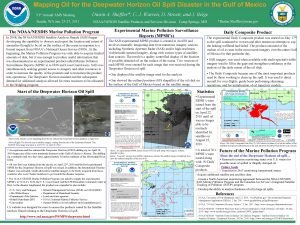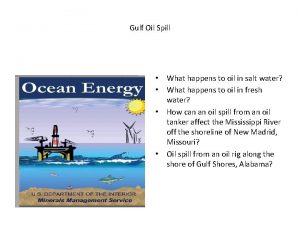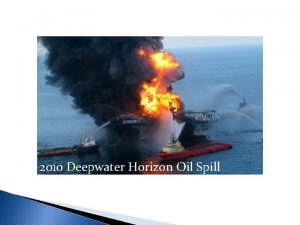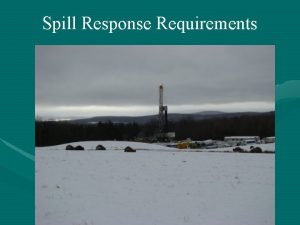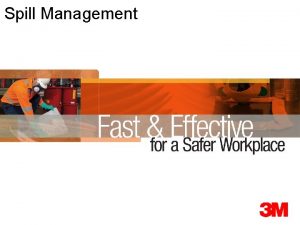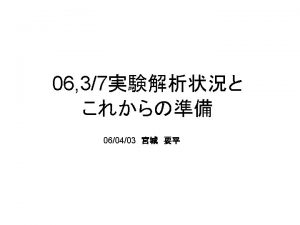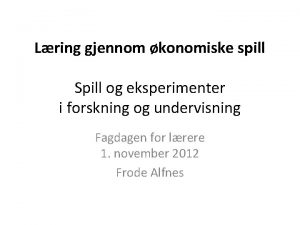Oil Spill Detection and Tracking Technologies Aircraft and














- Slides: 14


Oil Spill Detection and Tracking Technologies • Aircraft and Autonomous Aircraft Detection Methods • HF Radar Tracking Methods • Autonomous Surface Vessel Tracking Methods • Autonomous Underwater Vehicle Plume Mapping and Sampling Methods • Underwater Acoustic Plume Mapping Methods • Seismic Plume Mapping Methods

Aircraft and Autonomous Aircraft Surface Oil Detection Methods • Re: oil may be in various states: sheen, mousse, pooled or tar balls, with tar balls predominantly in 2 -5 mm size range

Aircraft and Autonomous Aircraft Surface Oil Detection Methods: Hyperspectral Reflectance using NASA AVIRIS on Aircraft, in visible there is little change in reflectance with oil thickness, but there is a difference in the Infrared.

Aircraft and Autonomous Aircraft Surface Oil Detection Methods: IR Variations in absorbance with oil water mixtures and thickness, with 40: 60 having highest reflectance

Aircraft and Autonomous Aircraft Surface Oil Detection Methods: AVIRIS flight lines May 17; background image is MODIS Terra satellite. Swath width is @5. 5 km

Aircraft and Autonomous Aircraft Surface Oil Detection Methods • Left: oil thickness map from AVIRIS at the spill site (dark thin, light thick). From Clark et al. (2010). • Clark, R. N. , et al. (2010), A method for quantitative mapping of thick oil spills using imaging spectroscopy, 51 pp. USGS Open-File Report 2010– 1167

Aircraft and Autonomous Aircraft Surface Oil Detection Methods Average UAVSAR radar intensity over the Deepwater Horizon spill site. Ships are dark blue dots; oil show as yellow/reddish (lower intensity).

Aircraft and Autonomous Aircraft Surface Oil Detection Methods

Aircraft and Autonomous Aircraft Surface Oil Detection Methods • AVIRIS was used to not only indicate where oil was, and roughly how thick it was, but actually also to attempt to quantify how much actual oil was spilled • Reflectance conditions for the arctic are different than for Go. M due to lower sun angles, and would reduce S/N in IR, however another portion of the spectrum could be used, if corrected for water absorbance • Additional validation tests would be necessary, but must be done at sea, not in test tanks. Flights near natural spill areas could be undertaken.

Autonomous Aircraft Surface Oil Detection: IKHANA is a Predator B aircraft purchased by NASA and used over Go. M DWH spill

Autonomous Aircraft Surface Oil Detection Methods • Well into the spill the CG finally gave permission for NASA to fly its’ IKHANA UAS (Unmanned Aircraft System). An improved AVIRIS system is being constructed now which will have a 10 X great S/N than the present system. Tests of the system will begin this summer. • One problem was that the IKHANA was allowed only to fly at night to avoid commercial aircraft. This would be less of a problem in many areas of the Alaska coast. • To date IKHANA has flown only from Edwards AFB in California, but discussions and plans are underway to fly out of Fairbanks. It can only from military airbases. • Minimum height is @2, 000 -5, 000’ up to 20 -30, 000’ operationally due to fuel use climbing. • Satellite comms links are expensive (up to $100 K/mo. ) • Requires aircrew of 10 people who can only work 8 hour days.

Autonomous Aircraft Surface Oil Detection: Comparison of AVIRIS Hyperspectral with LIDAR methods, note much higher spectral resolution using lidar methods, providing potentially greater accuracy of thickness and volume estimates. Lidar methods offer potential for future but need development.

Autonomous Aircraft Surface Oil Detection Methods: Coal Oil Point off Santa Barbara, a natural continuous seep for testing UAS oil thickness technologies including LIDAR.
